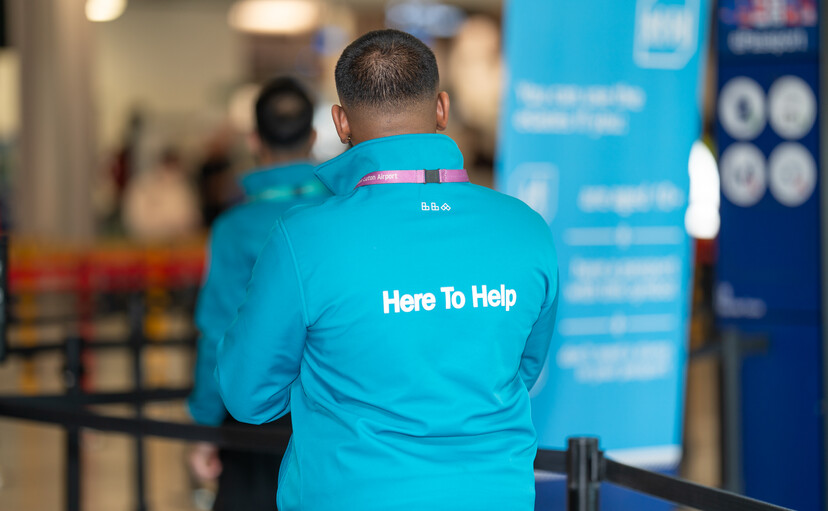IATA sees slow passenger and weak freight demand in March
The reduced passenger demand was due largely to the timing of the Easter holiday, which fell nearly a month later than in 2018. On a seasonally-adjusted basis, the underlying growth rate has been relatively steady since October 2018 at a 4.1% annualised pace. Capacity (available seat kilometres or ASKs) for the month of March grew 4.2% and load factor dropped 0.9 percentage point to 81.7%.
.jpg)
“While traffic growth slowed considerably in March, we do not see the month as a bellwether for the rest of 2019. Nevertheless, the economic backdrop has become somewhat less favorable, with the IMF having recently revised its GDP outlook downward for a fourth time in the past year,” said Alexandre de Juniac (above), IATA’s Director General and CEO.

International Passenger Markets
March international passenger demand rose just 2.5% compared to March 2018, which was down from 4.5% year-over-year growth recorded in February and almost 5 percentage points below its five-year average pace. All regions showed growth with the exception of the Middle East. Total capacity climbed 4.0%, and load factor fell 1.2 percentage points to 80.8%.
- European carriers saw March demand increase 4.7% over March 2018, down from 7.5% annual growth in February. The result partly reflects falling business confidence in the Eurozone and ongoing uncertainty about Brexit. March capacity rose 5.4% and load factor slid 0.6 percentage point to 84.2%, which still was the highest among regions.
- Asia-Pacific airlines’ traffic climbed 2.0% in March, compared to the year-ago period, which was down from 4% growth in February. However, results were stronger on a seasonally-adjusted basis. Capacity increased 4.0%, and load factor dropped 1.6 percentage points to 80.1%.
- Middle East carriers’ passenger demand fell 3.0% in March, marking a second consecutive month of declining traffic. This reflects the broader structural changes in the industry which have been taking place in the region. Capacity increased 2.3%, and load factor plunged 4.0 percentage points to 73.8%.
- North American airlines posted a 3.0% traffic rise in March compared to the year-ago period, which was down somewhat from 4.2% year-on-year growth in February. On a seasonally-adjusted basis, traffic has been trending strongly upwards, however. Capacity climbed 2.6% and load factor edged up 0.3 percentage point to 83.7%.
- Latin American airlines had the fastest traffic growth at 5.5%, compared to a year ago, up from 4.6% in February. March capacity rose 5.8%, and load factor dipped 0.2 percentage point to 81.9%. Latin America was the only region to show an increase in the year-on-year growth rate for March compared to February. In seasonally-adjusted terms traffic continues to trend upward sharply, notwithstanding economic and political uncertainty in some key countries.
- African airlines’ demand increased 2.1% compared to March 2018, down from a 2.5% rise in February. Capacity climbed 1.1%, and load factor strengthened 0.7 percentage point to 71.4%. The upward traffic trend has softened since mid-2018 in line with falling business confidence in some of the region’s key economies.
Domestic Passenger Markets
Domestic demand rose 4.1% in March, which was a deceleration from 6.2% growth recorded in February that was driven largely by developments in China and India. Domestic capacity climbed 4.5% and load factor dipped 0.3 percentage point to 83.4%.

- India’s domestic traffic rose just 3.1% in March, down from February’s growth of 8.3% and well-off the torrid five-year average growth pace of close to 20% per month. The slowdown largely reflects the reduction in flight operations of Jet Airways—which stopped flying in April—as well as disruptions at Mumbai airport owing to construction.
- Australia’s domestic traffic fell 3.2% in March, marking the fifth consecutive month of contracting demand.
Alexandre de Juniac said: “Despite March’s slowdown, the outlook for air travel remains solid. Global connectivity has never been better. Consumers can choose from more than 21,000 city pair combinations on more than 125,000 daily flights. And air fares continue to decline in real terms.
Aviation is truly the Business Freedom for the more than 12.5 million passengers who will board flights each day. But it also remains extremely challenging, as the recent failures of Jet Airways and WOW Air illustrate. Airlines compete intensely with one another, but they also cooperate in areas such as safety, security, infrastructure and the environment, to ensure that aviation can accommodate a forecast doubling in demand by 2037. Next month, leaders of the industry will gather in Seoul for the 75th IATA Annual General Meeting and World Air Transport Summit where all of these items will be high on the agenda.”
Global air freight markets
Meanwhile, IATA data for global air freight markets showed that demand, measured in freight tonne kilometres (FTKs), increased 0.1% in March 2019, compared to the same period in 2018.
While this is a significant improvement on the 4.9% contraction in February, in seasonally adjusted terms, demand is still down 1.5% over the past year.
Freight capacity, measured in available freight tonne kilometers (AFTKs), rose by 3.1% year-on-year in March 2019. Capacity growth has now outstripped demand growth for 11 out of the last 12 months.
Demand for air cargo continues to face significant headwinds:
- Global trade volumes have fallen by 1% over the past year;
- Global economic activity and consumer confidence continue to weaken;
- Also, the export order component of the global manufacturers Purchasing Managers Index (PMI) has indicated falling global export orders since September 2018.
Industry confidence regarding the outlook, however remains relatively upbeat with only 13% of respondents from IATA’s Business Confidence Survey expecting to see a decrease in freight volumes in 2019 compared to 2018.
“Year-on-year demand for air freight edged back into positive territory in March with 0.1% growth. After four consecutive months of contraction, this is an encouraging development. But the headwinds from weakening global trade, growing trade tensions and shrinking order books have not gone away,” said Alexandre de Juniac, IATA's Director General and CEO.

Regional Performance
All regions reported year-on-year demand growth in March 2019, except Asia-Pacific which contracted.
- Asia-Pacific airlines saw demand for air freight shrink by 3.4% in March 2019, compared to the same period in 2018. This was a significant improvement from the 12.0% decline in growth from the previous month. Weaker manufacturing conditions for exporters in the region, ongoing trade tensions and a slowing of the Chinese economy impacted the market. Capacity decreased by 1.0%.
- North American airlines saw demand increase by 0.4% in March 2019, compared to the same period a year earlier. The recent easing of growth is partly due to a slowing of US domestic economic activity in the later part of 2018 and falling global trade volumes. Despite this, new export orders are rising which would support air cargo growth. Capacity increased by 2.6% over the past year.
- European airlines posted a 3.6% increase in freight demand in March 2019 compared to the same period a year earlier. Given the weaker manufacturing conditions for exporters in Germany, and uncertainty over Brexit, March’s performance represents a positive outcome. Capacity increased by 6.4% year-on-year.
- Middle Eastern airlines’ freight volumes increased 1.3% in March 2019 compared to the year-ago period. Capacity increased by 3.8%. A clear downward trend in seasonally-adjusted international air cargo demand is now evident with weakening air freight volumes to/from North America and to/from Asia Pacific contributing to the softer performance.
- Latin American airlines experienced an increase in freight demand growth in March 2019 of 3.6% compared to the same period last year and capacity increased by 16.9%. The emergence of the Brazilian economy from recession is supporting a resurgence in air cargo demand. Nevertheless, ongoing economic and political uncertainties in various parts of the region continue to present challenges for the industry.
- African carriers posted the fastest growth of any region in March 2019, with an increase in demand of 6.0% compared to the same period a year earlier. Seasonally-adjusted international freight volumes are lower than their peak in mid-2017; despite this, they are still around 30% higher than their most recent trough in late-2015. Capacity grew 15.2% year-on-year.












